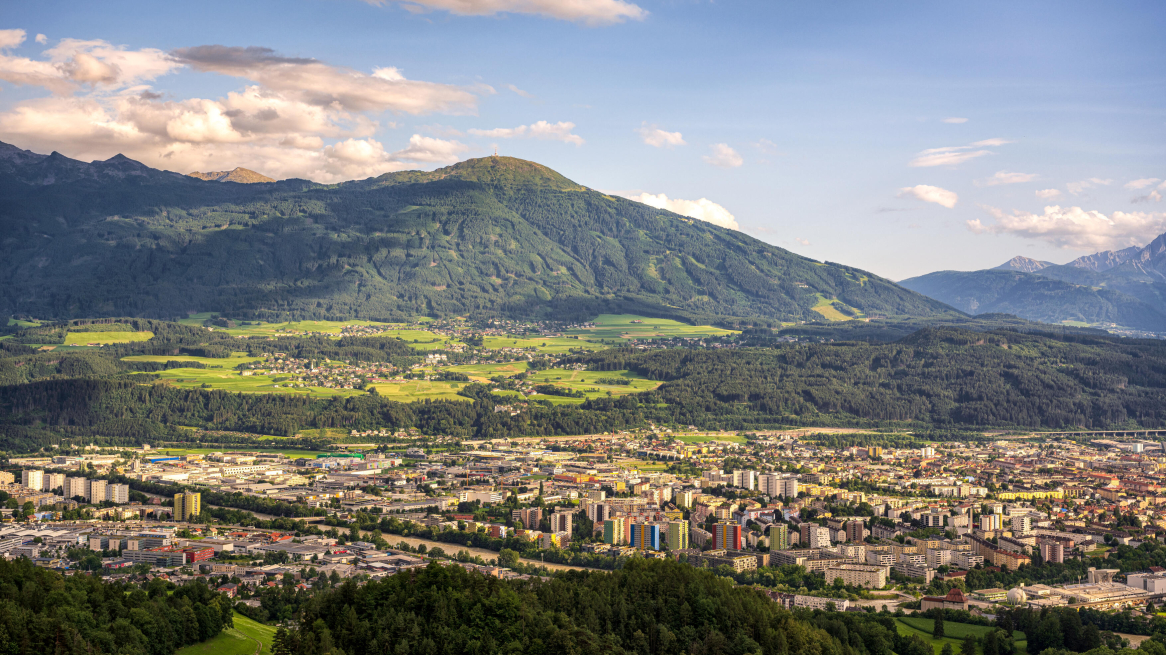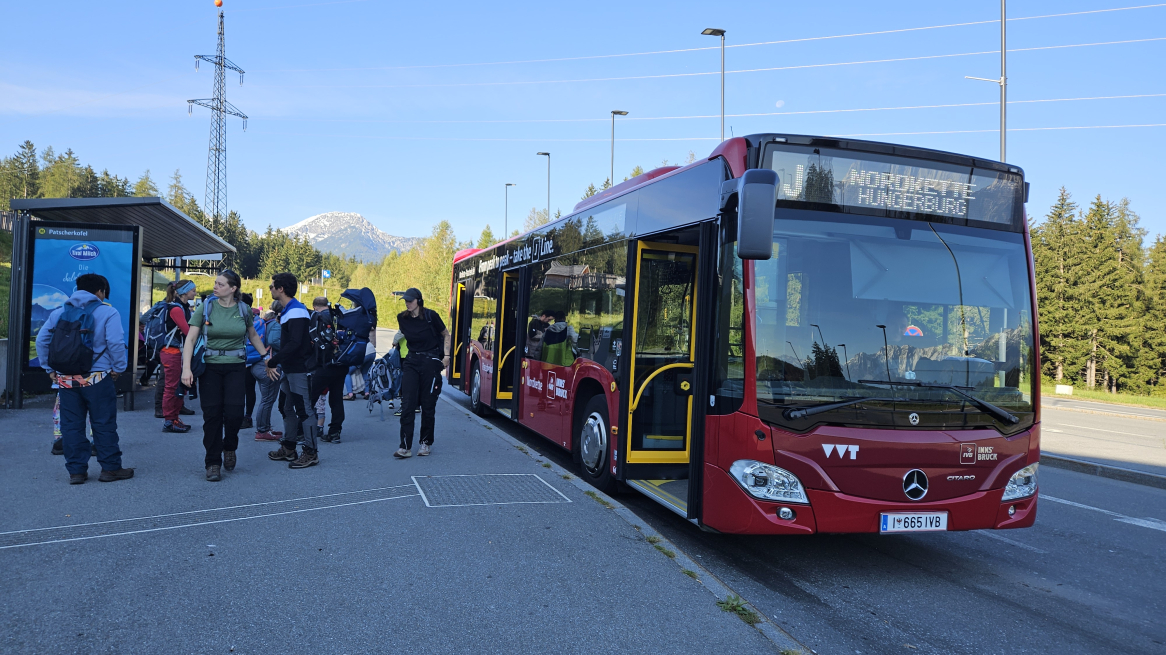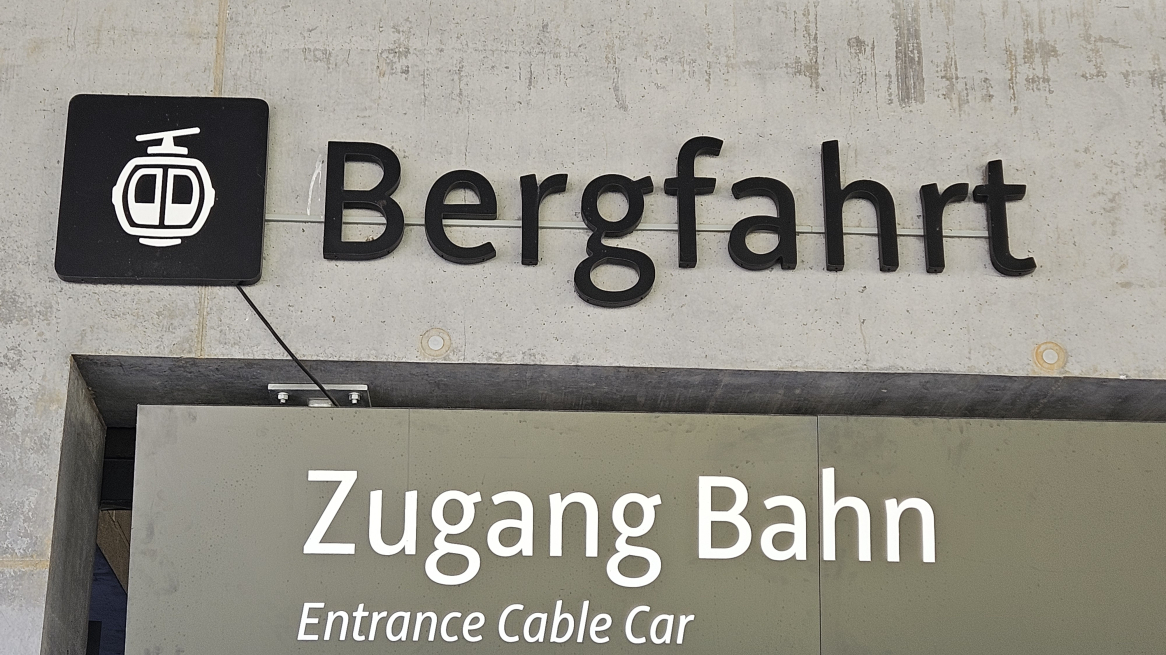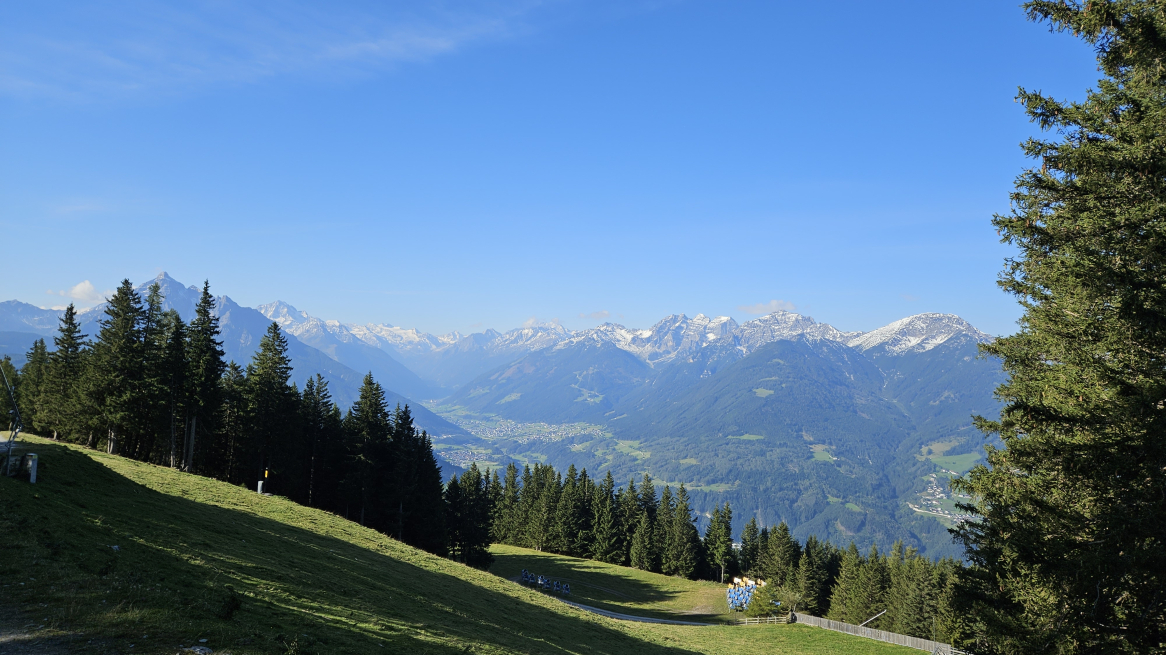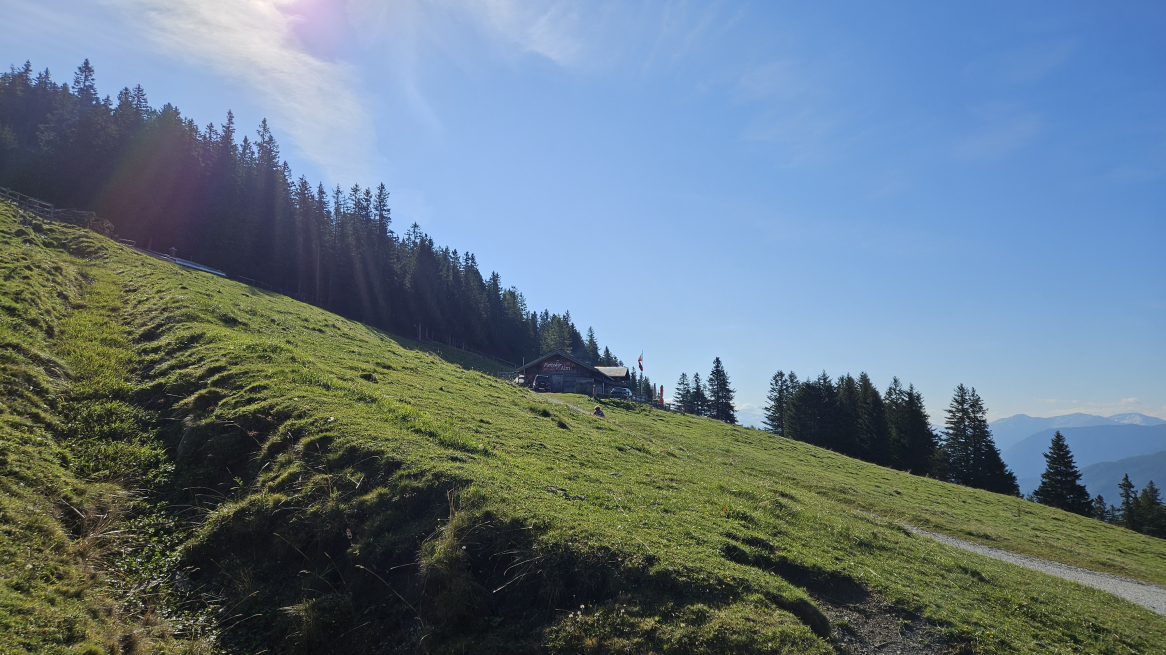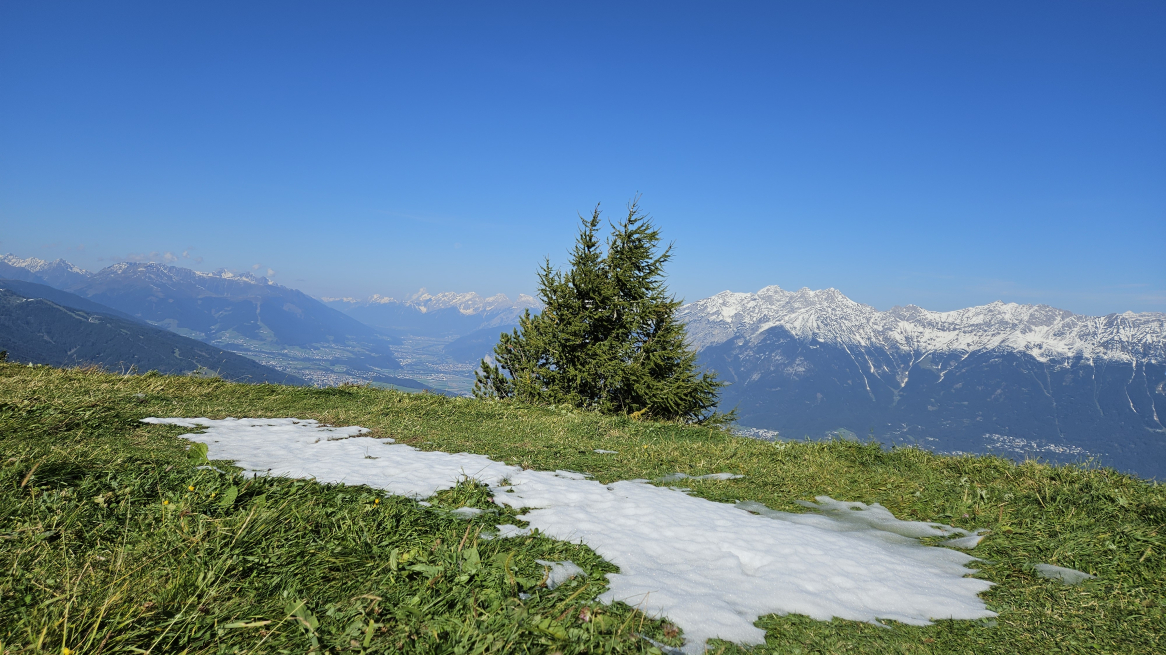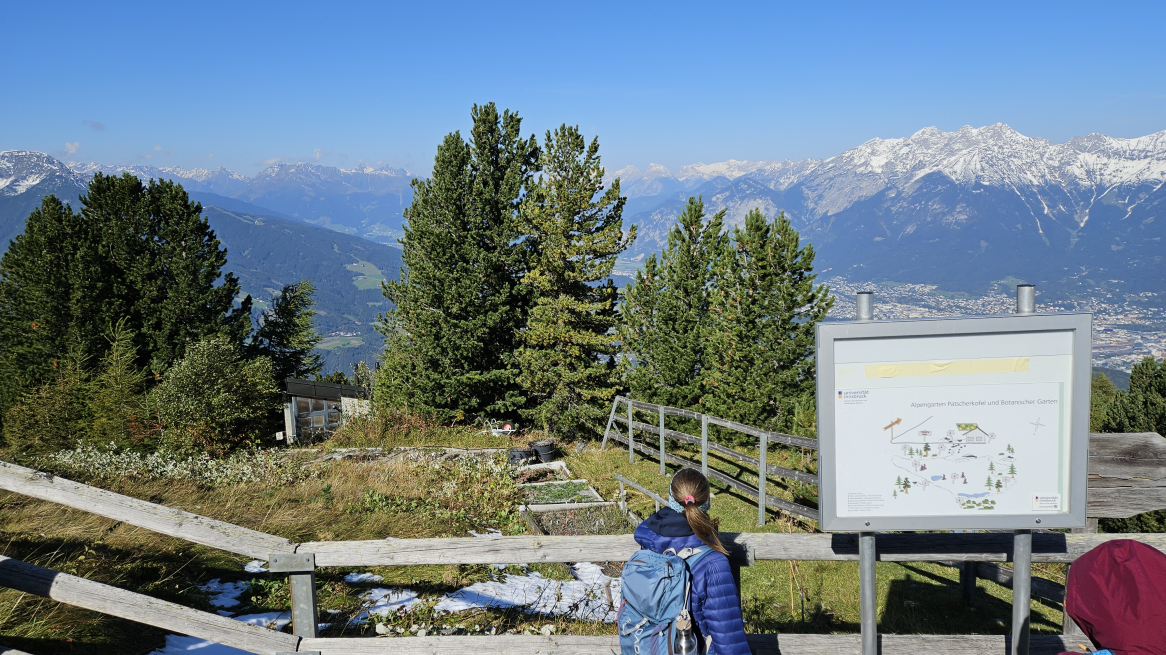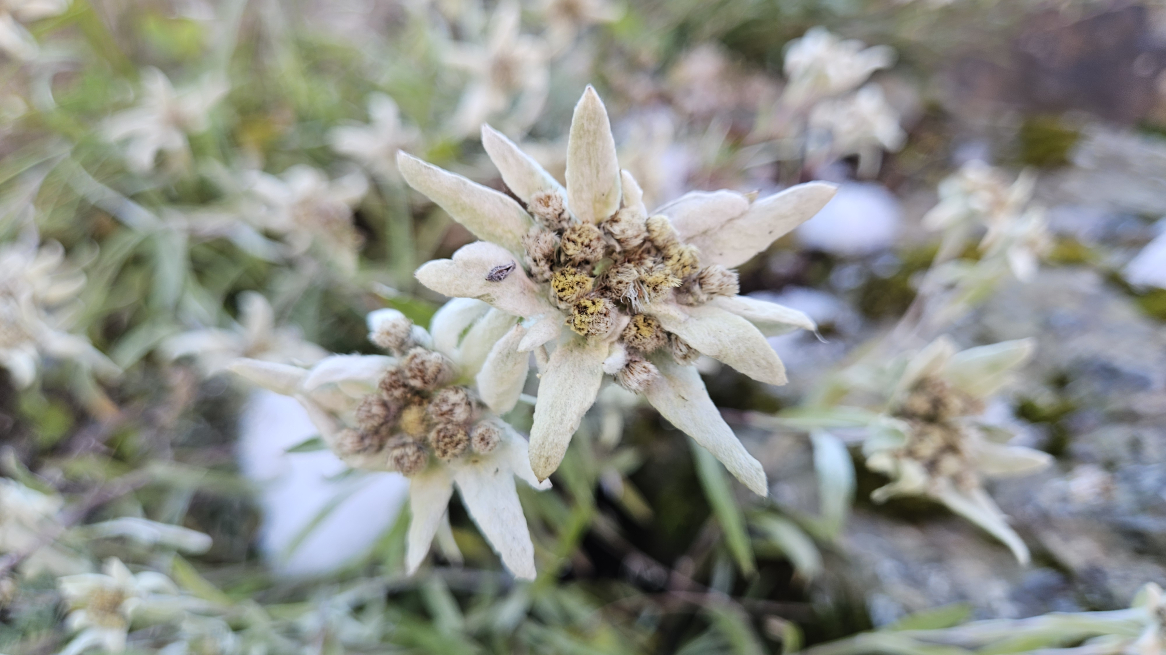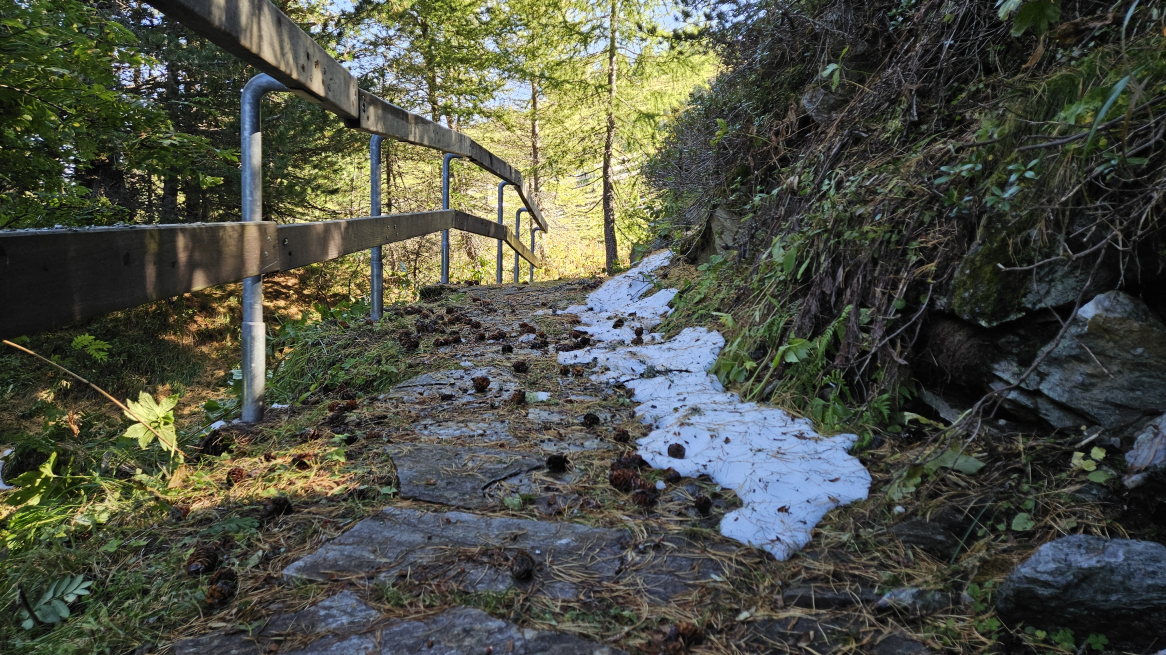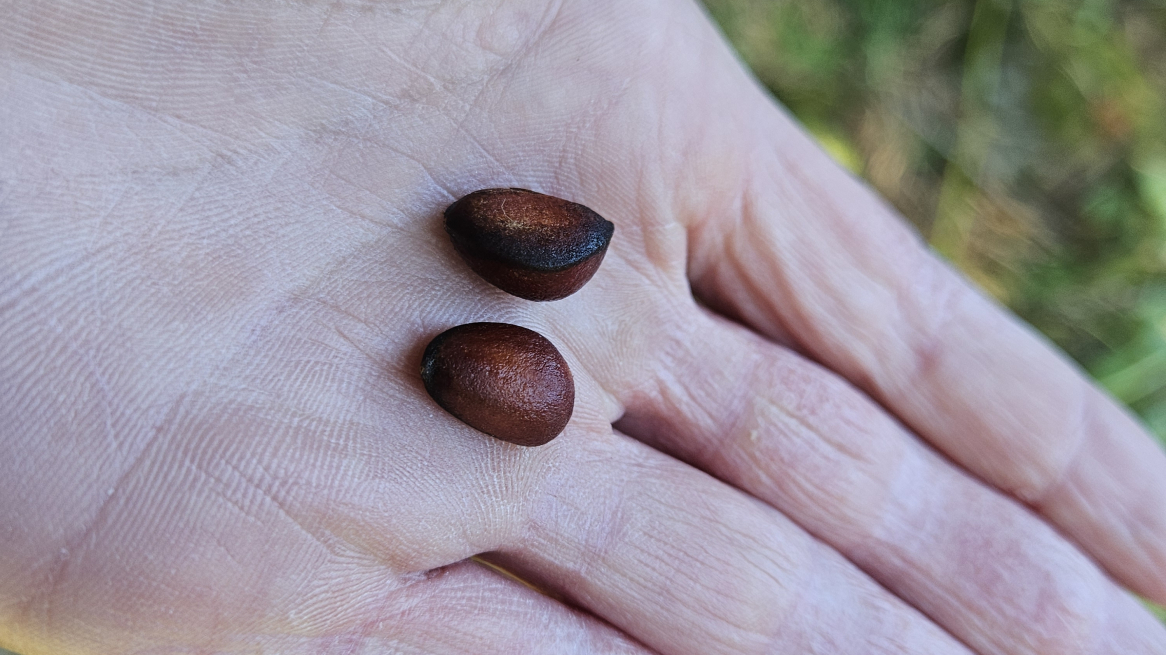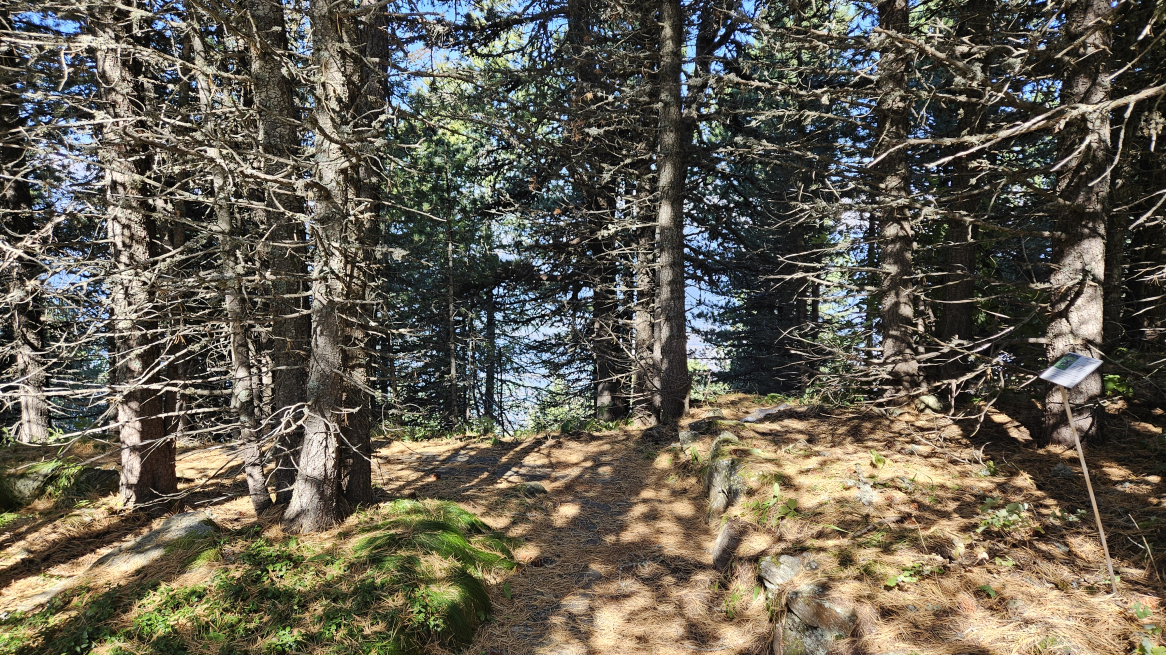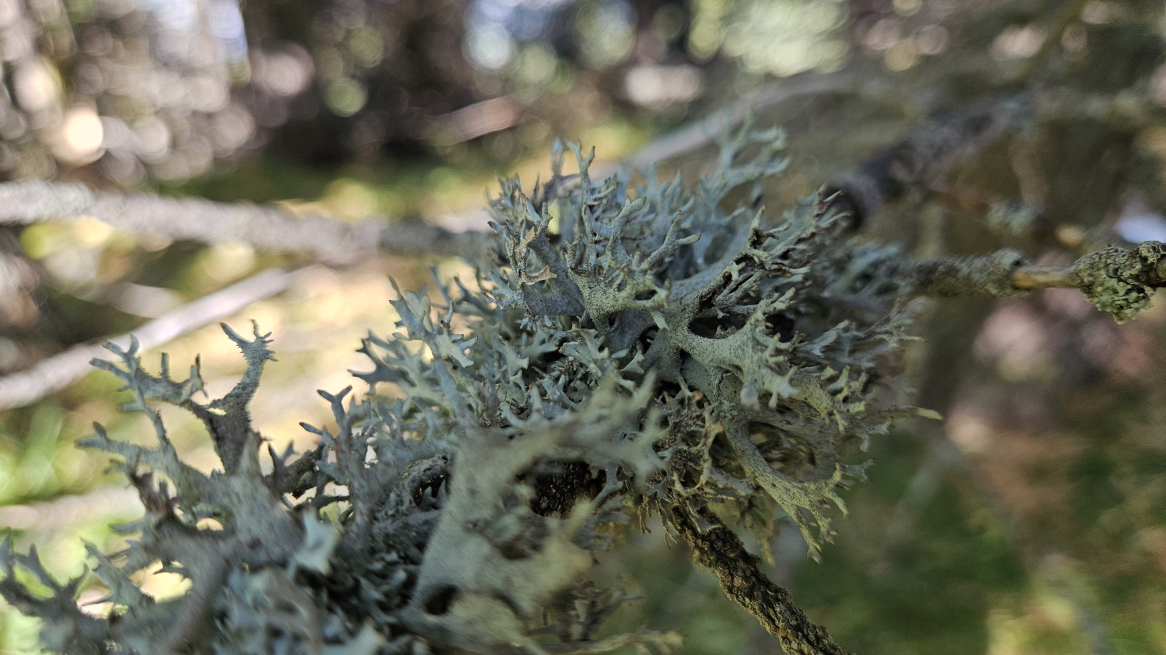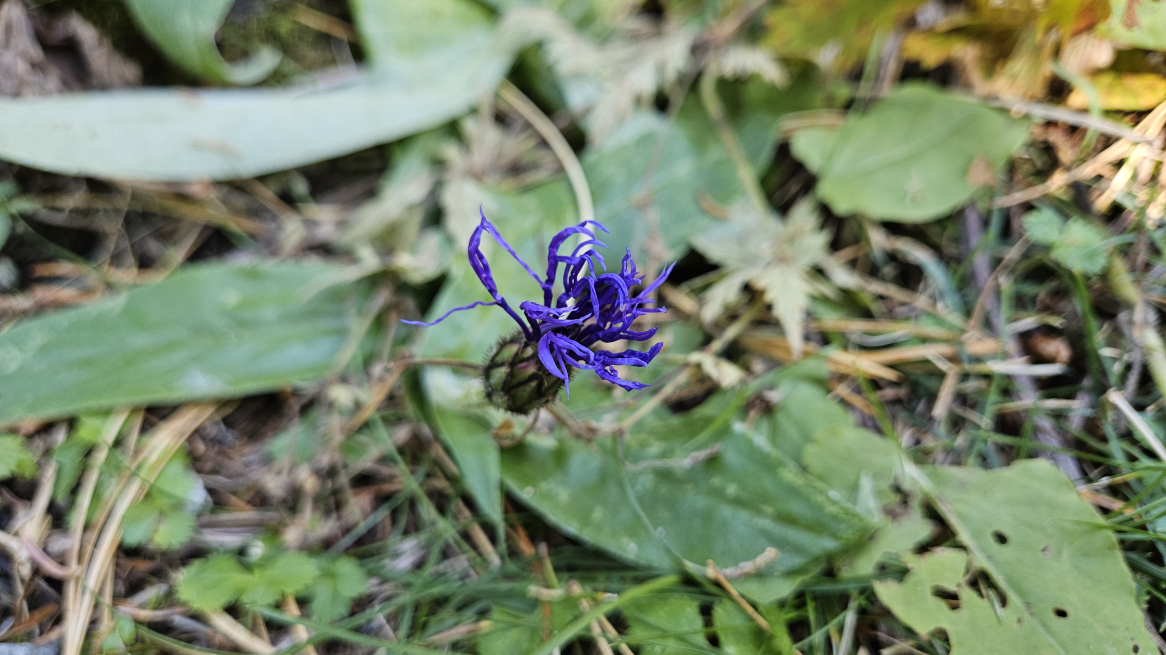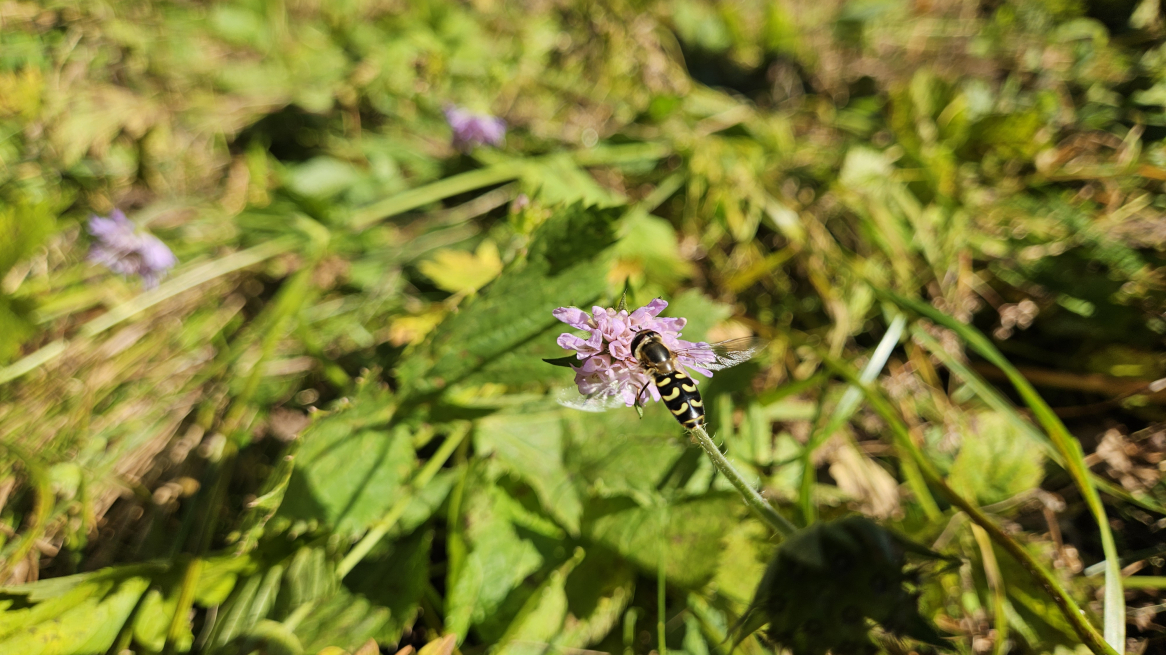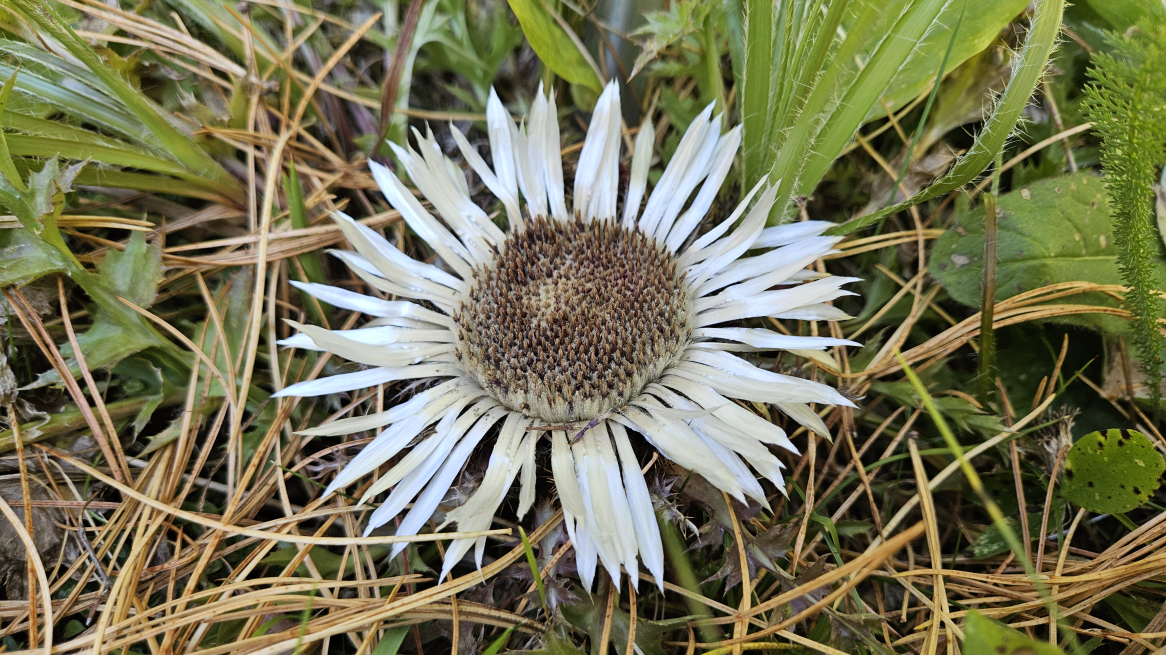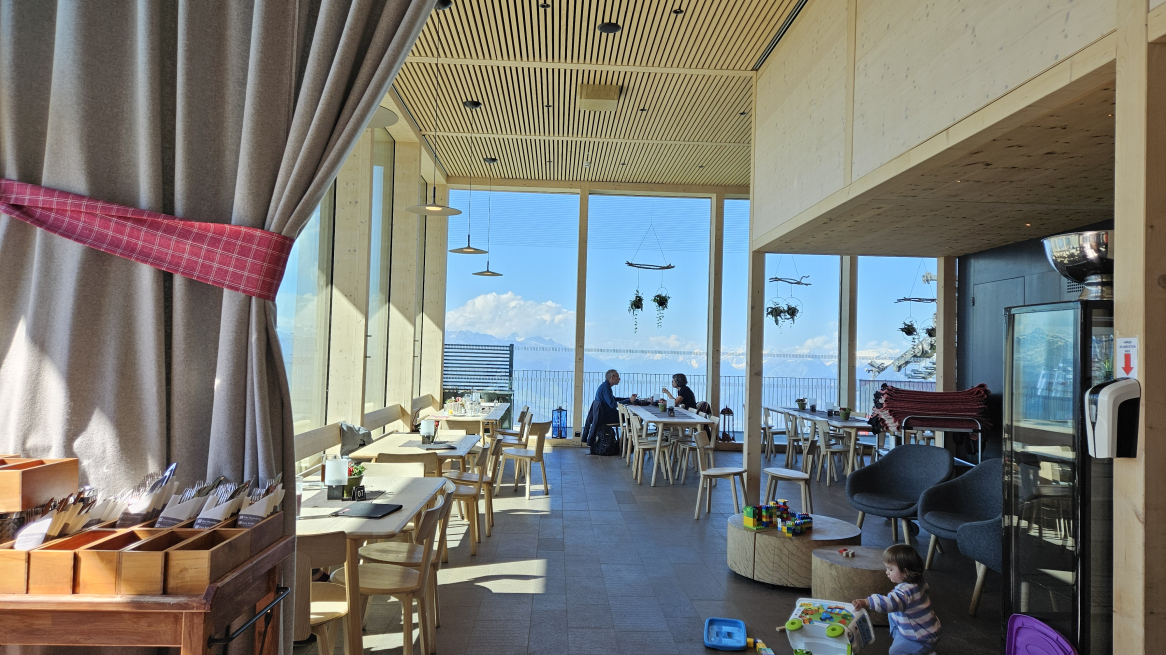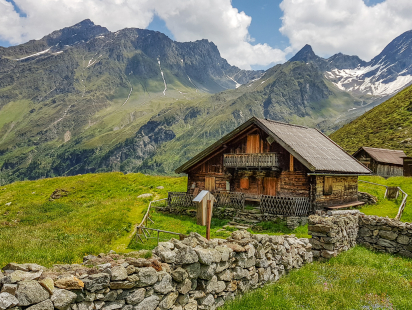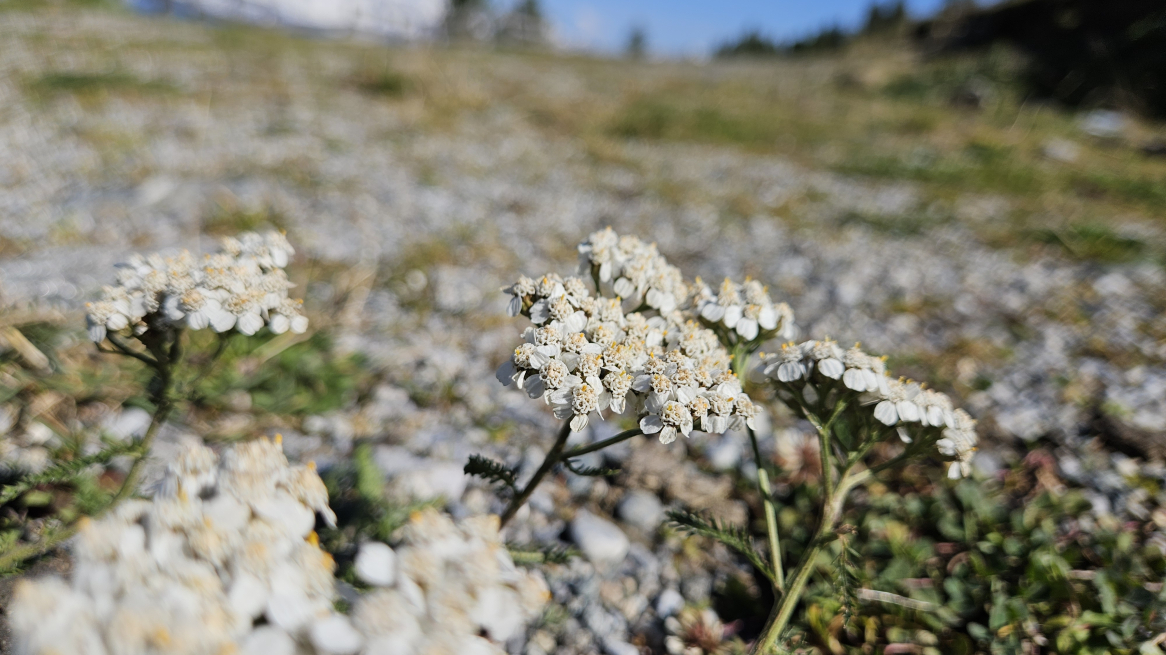
The Tyrolean mountains provide harsh living conditions for flora and fauna. As part of the European Mobility Week, I was able to find out which plants still feel at home on the Patscherkofel, even above 1,700 meters above sea level.
Perceived knowledge is a deceptive thing. As a child, I was firmly convinced that the transmitter at the summit of the Patscherkofel was a ship with a striped mast and that the whole mountain was an extinct volcano. And, of course, that it was half bald because it was so naked and round above the tree line. fortunately, 20 years later, fantasy and facts are better separated (even if I sometimes miss the ship). However, there was still some catching up to do when it came to botanical facts, despite hikes with my herb-loving relatives. The European Mobility Week came at just the right time: under its banner, Innsbruck Tourism offered tours using public transport, including a hike through the natural landscape of the Kofel. Free registration, rucksack packed and off into the countryside.
Colorful group
The meeting point was in front of the Innsbruck Tourismus office on a clear Saturday morning. According to plan A, we were supposed to take bus line J from here to the Patscherkofelbahn, which would then take us to the Alpengarten near the mountain station. After welcoming us, our guides, Christine and Stefanie, informed us that we had to change to plan B. There was still snow over the Alpengarten. There was still snow over the Alpengarten and we would explore the area around the middle station instead. The two of them had to improvise several times that day, if only because of the language. Apart from myself, only families from India, Argentina, Indonesia, New Zealand and South Tyrol had signed up. This international mix made the tour even more interesting.
The J line takes hiking enthusiasts from the city to the mountain in no time at all.
Mobility in all its facets: In the course of the hike, we were able to use the mountain railroad at a reasonable price.
Plan B and C
As the J line is closely timed, the wait for the next bus was less than a minute and a half. After swinging up the winding road to the valley station, we were in for a little surprise. According to the staff, the Alpine Garden was open, so we were able to take a detour there after all. The children were particularly excited by the prospect of reaching the snow, which was still lying in patches. I, in my mid-height mountain boots, didn't entirely share their enthusiasm, but I was optimistic. We got into the gondolas and set off on plan B: to hike from the middle station up to the Alpine Garden and admire the plants.
The middle station is a good 1,700 meters above sea level. The air was wonderfully fresh and the sky was bright blue, but I quickly put on an extra layer in the shade. Meanwhile, the children were given an introduction to the basics of mountain etiquette. I could literally hear my parents telling me not to throw stones down the mountain and to keep my hands out of my pockets. It soon became clear that a one-hour hike was not ideal for the little ones, so plan C: a walk to the Patscher Alm and then the cable car to the mountain station.
From the middle station, you can see all the way to the Stubai Glacier. The snow cannons were a source of amazement among the participants.
Of alpine pastures and huts
As a local, it's easy to lose sight of how much effort goes into the winter sports sector. Below the path, snow cannons stood together like a herd of colorful grazing cattle. After one of the participants asked what these strange things were, Stefanie explained how snowmaking worked and where the required water came from. With a view of the Stubai Glacier, she explained why it kept melting and why pilots have to complete their own training in order to be allowed to fly to Innsbruck Airport.
Shortly before the Patscher Alm, the question arose as to what the difference was between a hut and a mountain pasture. Here we are back to perceived knowledge: I could have provided an approximate definition, but presented it with a lot of uncertain stuttering. Stefanie was much more competent. The mountain pastures had an agricultural background and were run by the communities, who let their cattle graze on the mountain in summer. Transporting the milk down to the valley for processing would have meant too much effort, so cheese and butter were made on site. At some point, these products were then sold to passing hikers, and the foundations were laid for mountain pastures as catering establishments. The huts, on the other hand, are run by Alpine associations and were intended from the outset as a resting place for hikers.
The scent of Swiss stone pine and edelweiss
After this excursion into Tyrolean history, we headed back to the cable car and up to the mountain station. Here the next layer of clothing was due straight away, every item in the rucksack had paid off. The entrance to the Alpine Garden is diagonally below the mountain hut, and on the way Stefanie explained to the group what the special features of Swiss stone pine and larch are. The rare Swiss stone pines are captivating with their fragrance, while larches are the only conifers that shed their needles before winter. I asked how the plants grow on the summer ski slopes. The answer: these soils are acidic due to grazing, and the yellow buttercup is an excellent indicator of this. Ironically, soils with fewer nutrients are richer in flowers because the plants are not crowded out by more demanding plants.
Some snow remained, much to the delight of the children.
With the panorama around the Alpine Garden, it was sometimes a little difficult to concentrate on the plants right in front of you.
Behind the turnstile of the Alpine Garden, which is accessible free of charge, one of the most iconic plants of the Alps awaited us: the edelweiss. It is more common in the Dolomites than here, which is due to the climate and the soil. This led to a short digression about the geology of the Inn Valley: the main Alpine ridge - and with it the Patscherkofel - is dominated by granite and gneiss, whereas the Karwendel is dominated by limestone. The edelweiss migrated here from Siberia during the last ice age 10,000 years ago. It was also this ice age that formed the Alps. Today's mountain peaks rose above the ice sheet, round peaks such as the Kofel were under the ice and were ground away. The U-shaped Inn Valley was also shaped by the glacier, while V-shaped valleys were eroded by rivers.
In the silence of the garden
We passed the useful yarrow, the poisonous monkshood, the slow-growing alpine rose and the versatile masterwort in the wonderfully vertical alpine garden. The guides explained to us that the higher the plants grew, the richer they were in active ingredients. Meanwhile, I was particularly enthusiastic about the Swiss stone pines, between which the path meandered. Standing amidst the variety of plants, nibbling on Swiss stone pine seeds and coming to rest - that was my personal highlight of the day.
After the tour through the Alpine garden, the whole group stopped off at the Kofel, the restaurant at the mountain station, and enjoyed a relaxing end to the day together. While the children played, the adults chatted for a while over soup and baked potatoes before taking the cable car back down into the valley. My conclusion: A trip to the Alpine Garden is always worthwhile as an educational mini-break.
Images, unless otherwise indicated: © Theresa Kirchmair
Rate this article
Show me the location on the map
Enthusiastic Tyrolean with a penchant for the absurd. Likes to jump over walls and then uses the resulting bruises as a Rorschach test.
Similar articles
Via ferratas open up alpine spaces away from all hiking trails. The upcoming via ferrata testival on…
We all love summer, the sun and, yes, the heat. But sometimes it's just too much of…
Places where you can recharge your batteries, exceptionally beautiful hiking trails, unique views and special natural landscapes:…
Yoga on the mountain, in the open air, with an almost kitschy view - I don't…

